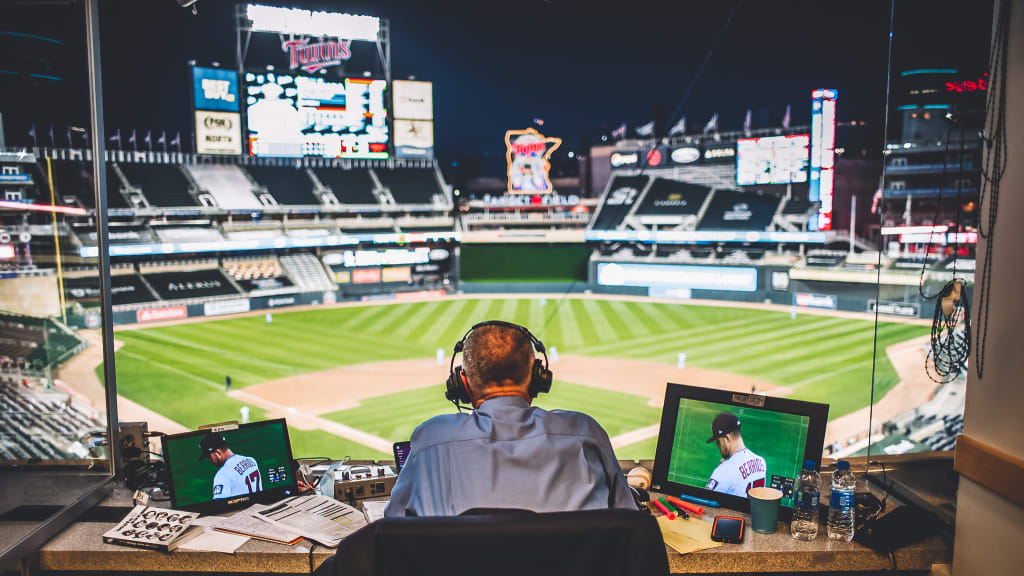

Watching baseball on television isn’t just convenient—it’s enlightening. Between the ever-present strike-zone graphic and the commentary from legends like John Smoltz, TV brings the game’s strategy to life in a way the ballpark can’t. The broadcast transforms every pitch from a blur into a masterclass in precision, psychology, and storytelling.
1. The Strike-Zone Box: Seeing the Invisible
The strike-zone box—those faint white lines hovering over home plate—has changed how fans understand pitching.
From the stands, you might squint to see whether a ball grazed the corner. On TV, you know instantly. You see where a 95 mph fastball crosses, whether it clipped the edge or just missed. The graphic brings accountability and depth, letting fans judge the duel between pitcher and batter in real time.
It’s not just about knowing the umpire’s call—it’s about learning why certain pitches work and how elite hitters adjust to them.
2. The Voice That Teaches the Game: John Smoltz
Former Cy Young winner and World Series champion John Smoltz has become one of the most insightful color commentators in modern sports broadcasting.
Smoltz doesn’t just react to pitches—he anticipates them. He explains why a pitcher might elevate the fastball, why a batter’s timing is off, or how the catcher’s setup reveals intent. His calm but analytical tone bridges player experience and fan understanding.
During Game 1 of the World Series tonight, Smoltz delivered a clinic in baseball intelligence. He broke down pitch sequencing, explained mound visits, and shared how nerves play out in October. His blend of technical analysis and storytelling made the broadcast feel like a seminar on elite competition.
What makes Smoltz remarkable isn’t just his expertise—it’s his connection to the human side of the game. He weaves in stories about his former teammates, the pressure of the postseason, and how subtle adjustments separate legends from the rest. Listening to him, you don’t just watch baseball—you understand it.
The stories of his colleagues, the behind-the-scenes anecdotes, and his ability to humanize the players make every broadcast memorable.
3. The Color and Context of Great Commentary
Good play-by-play anchors keep the rhythm; great color commentators elevate it. Smoltz, Joe Davis, and their colleagues enrich each moment with history, context, and humor.
They share anecdotes that bring players to life. They reveal background details about how teams prepare, how data influences pitch selection, and how clubhouse chemistry matters more than analytics can measure.
Baseball’s slow pace is its strength—it allows time for these insights. On TV, those moments fill the gaps between pitches, making the game as much about reflection as reaction.
4. Comfort, Clarity, and Control
At home, you control everything: screen size, volume, lighting, and angle. You can pause, rewind, and replay the key moments that broadcasters highlight.
Television broadcasts show the break on a slider, the spin rate of a fastball, and the subtle framing of a catcher. Fans who want to learn baseball—not just watch it—get front-row access to the sport’s complexity.
You’re not battling crowds, weather, or sightlines. You’re comfortable, attentive, and connected to the game’s mind rather than its noise.
5. Why the Two Elements Combine So Well
When you pair the strike-zone overlay and the announcers’ explanation, you get a compound effect:
-
Instant clarity: The strike-zone shows where the pitch landed; the announcer explains why it worked.
-
Education: Over time, you recognize patterns and predict strategy like a coach.
-
Suspense: A borderline pitch makes you hold your breath—then Smoltz calmly explains the intent behind it.
-
Depth: You gain appreciation for the chess match between pitcher and hitter, understanding how psychology and precision define outcomes.
Watching from home feels less like spectating and more like participating intellectually.
6. What Stadiums Are Missing
In order for me to go to a baseball stadium again, I need to be able to hear the commentators and see the strike-zone box clearly—just like I do at home.
That’s what the modern ballpark experience lacks. The massive LED scoreboards show flashy graphics, crowd prompts, and stats, but rarely the detailed broadcast view fans have grown accustomed to.
If stadiums want to compete with the home viewing experience, they need to evolve:
-
Integrate real-time strike-zone overlays into scoreboard replays.
-
Offer personal audio feeds of the broadcast so fans can listen to Smoltz and his colleagues from their seats.
-
Improve seat-back displays or fan apps that sync with live commentary and pitch data.
Baseball is a sport of strategy, and many fans crave understanding as much as excitement. Right now, the TV experience delivers both. Stadium technology needs to catch up.
7. The Future of Baseball Broadcasting
Broadcast technology continues to evolve. Expect strike-zone visualizations that adjust dynamically to each batter’s stance, augmented-reality camera angles, and personalized commentary streams.
Some streaming platforms are already experimenting with “analyst mode,” where fans can toggle between commentary styles or on-screen data. But even with these innovations, the human element—voices like John Smoltz’s—remains irreplaceable. His combination of experience, humility, and storytelling brings baseball’s complexity to life.
8. Conclusion
Baseball on TV is the perfect mix of technology and storytelling. The strike-zone box shows what happened; commentators like John Smoltz explain why it happened.
Game 1 of the World Series was proof of how much detail, context, and drama can be conveyed through the broadcast booth.
Until stadiums give fans access to that same level of insight—through clear strike-zone displays, audio commentary, or better seat tech—I’ll keep watching from home.
Because while the stadium has atmosphere, the broadcast has understanding. And for me, that’s what makes baseball truly beautiful.

